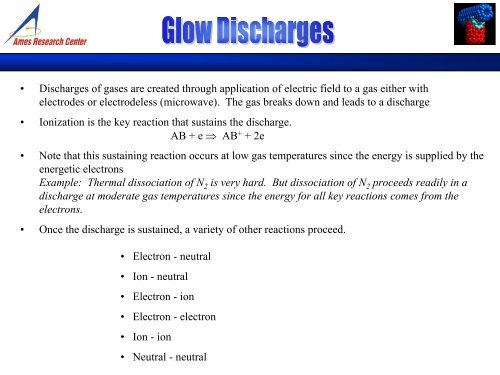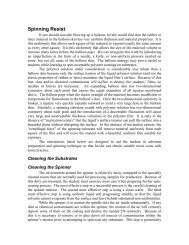IV. Processes: Top-down and Bottom-up
IV. Processes: Top-down and Bottom-up
IV. Processes: Top-down and Bottom-up
You also want an ePaper? Increase the reach of your titles
YUMPU automatically turns print PDFs into web optimized ePapers that Google loves.
• Discharges of gases are created through application of electric field to a gas either with<br />
electrodes or electrodeless (microwave). The gas breaks <strong>down</strong> <strong>and</strong> leads to a discharge<br />
• Ionization is the key reaction that sustains the discharge.<br />
AB + e ⇒ AB + + 2e<br />
• Note that this sustaining reaction occurs at low gas temperatures since the energy is s<strong>up</strong>plied by the<br />
energetic electrons<br />
Example: Thermal dissociation of N 2 is very hard. But dissociation of N 2 proceeds readily in a<br />
discharge at moderate gas temperatures since the energy for all key reactions comes from the<br />
electrons.<br />
• Once the discharge is sustained, a variety of other reactions proceed.<br />
• Electron - neutral<br />
• Ion - neutral<br />
• Electron - ion<br />
• Electron - electron<br />
• Ion - ion<br />
• Neutral - neutral

















